If you buy through our links, we may earn an affiliate commission. This supports our mission to get more people active and outside.Learn about Outside Online's affiliate link policy
The Best Backcountry Ski Bindings
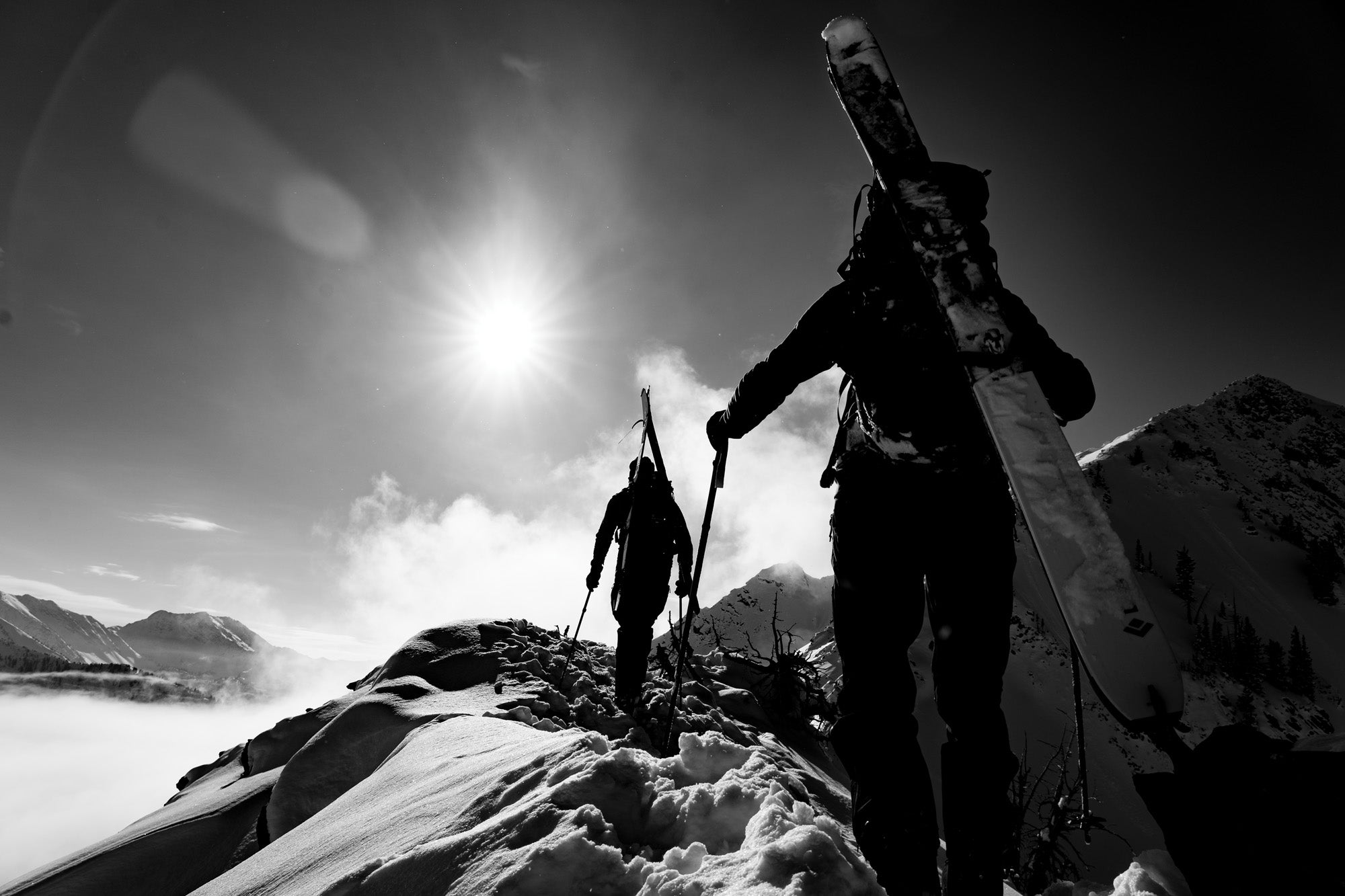
Photo credit: Adam Clark
Backcountry bindings have seen some of the highest levels of innovation in the ski industry over the last decade. They have also led, in part, to an explosion in the popularity of skiing uphill at the same time.
The best backcountry bindings walk a fine line between being lightweight for long tours, but strong enough to handle aggressive skiing on the way back down. That’s why we’ve listed weight as well as release ratings to help determine which binding is right for you. If you’re still not sure, head to your local ski shop with a few of these bindings in mind to get direct answers.
Note: Backcountry skiing is an inherently dangerous activity. Make sure you have a transceiver, shovel, probe, avalanche education, partner, and a plan before venturing beyond the ski area boundaries.
Ready for more in-depth gear coverage? Join Active Pass to get a bigger picture about backcountry ski bindings and more.
Marker Duke PT 16
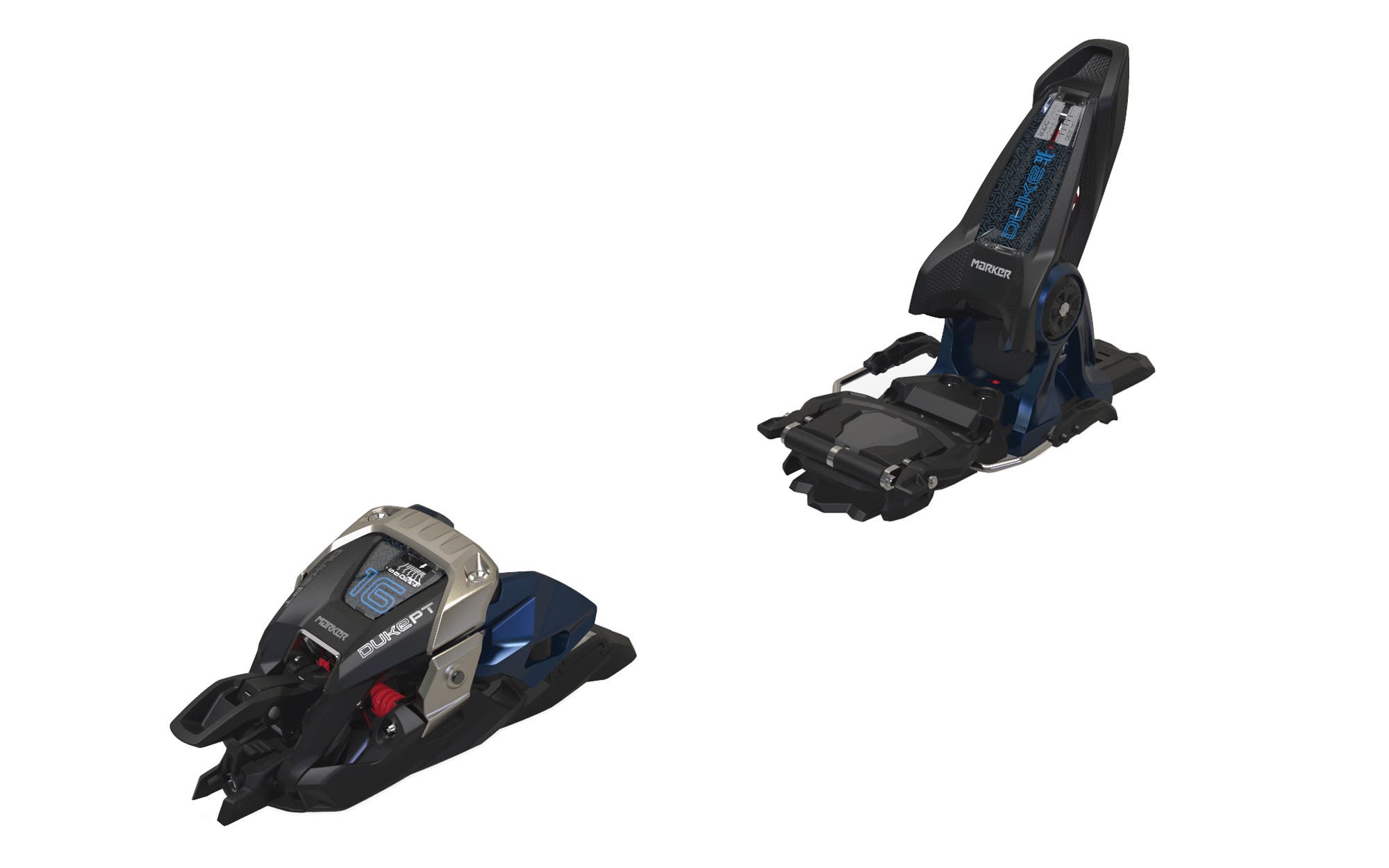
The new Marker Duke PT 16 is a touring binding optimized for the best downhill experience possible. In ski mode, the all-new toe piece inspires great confidence by practically swallowing the front of any ski boot. Pop off and pocket the 10.5-ounce toe piece housing, click your tech toes into the built-in pins, and efficiently haul your favorite freeride sticks up a skin track for another lap. Those intimidated by the weight and retention ratings will be happy with the Duke PT 12.
Marker Duke PT 16 Details
- Release Value Range: 6–16
- Weight: 3 lbs.
- Brakes: Included
- MSRP: $825
Shop for the Marker Duke PT 16: REI | Backcountry | evo | Skis.com | Amazon
Related: Can the Marker Duke PT take down the Salomon SHIFT as the Cool Kids’ Backcountry Binding?
Fritschi Xenic 10
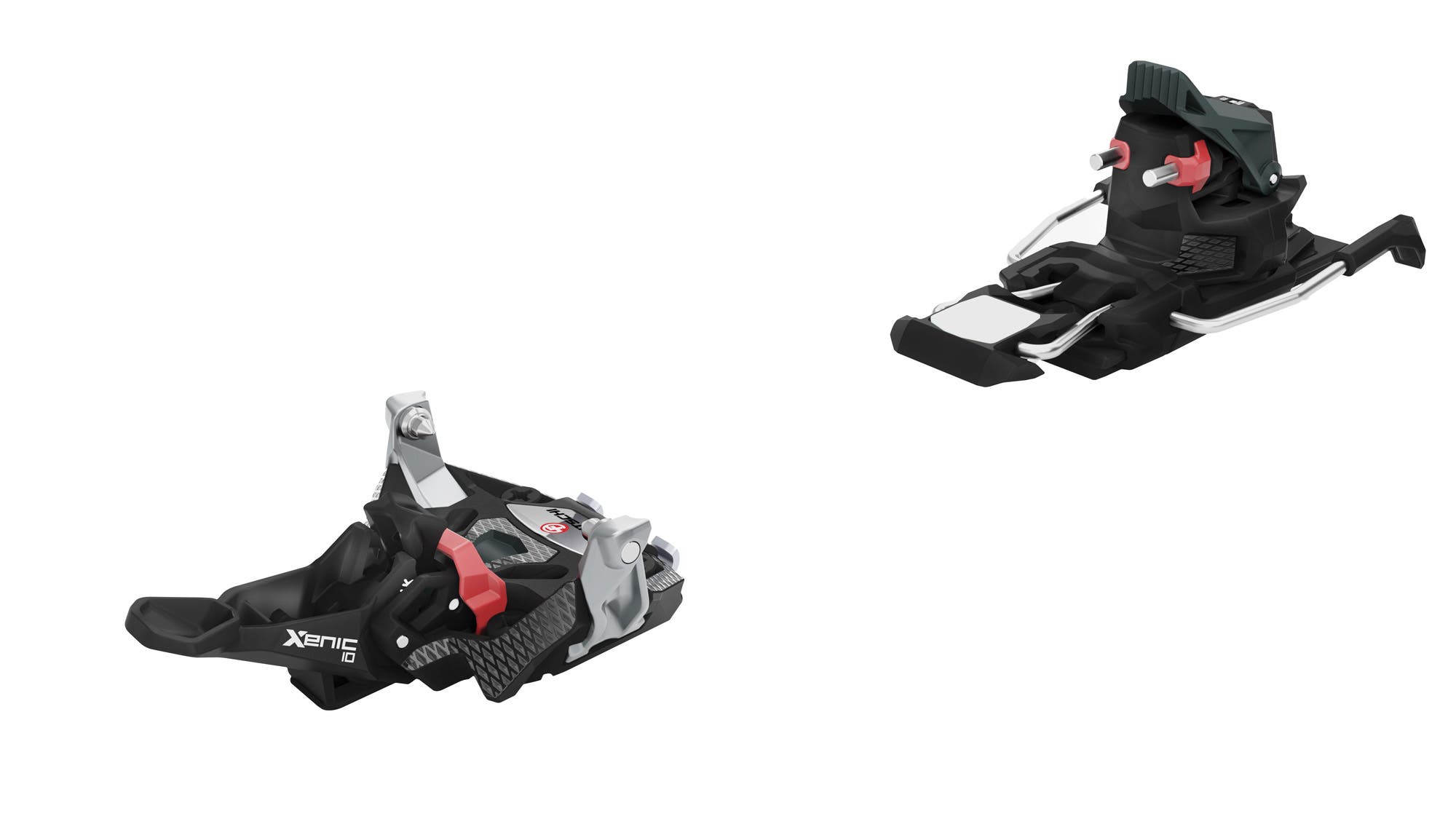
The Swiss-made Fritschi Xenic 10 might be the holy grail for a completely functional, downhill-friendly featherweight binding that ascends and descends like a dream. The Xenic’s toe pins extend laterally and linearly—instead of down and out—which prevents pre-release caused by ski vibrations. The heel’s relatively wide footprint also increases stability and energy transfer in ski mode. With each binding weighing less than a pound, prepare to leave partners on the skin track in the dust.
Fritschi Xenic 10 Details
- Release Value Range: 4–10
- Weight: 9.92OZ
- Brakes: Optional
- MSRP: $430
Buy the Fritschi Xenic 10: Backcountry | evo | Amazon
Atomic SHIFT MNC 10
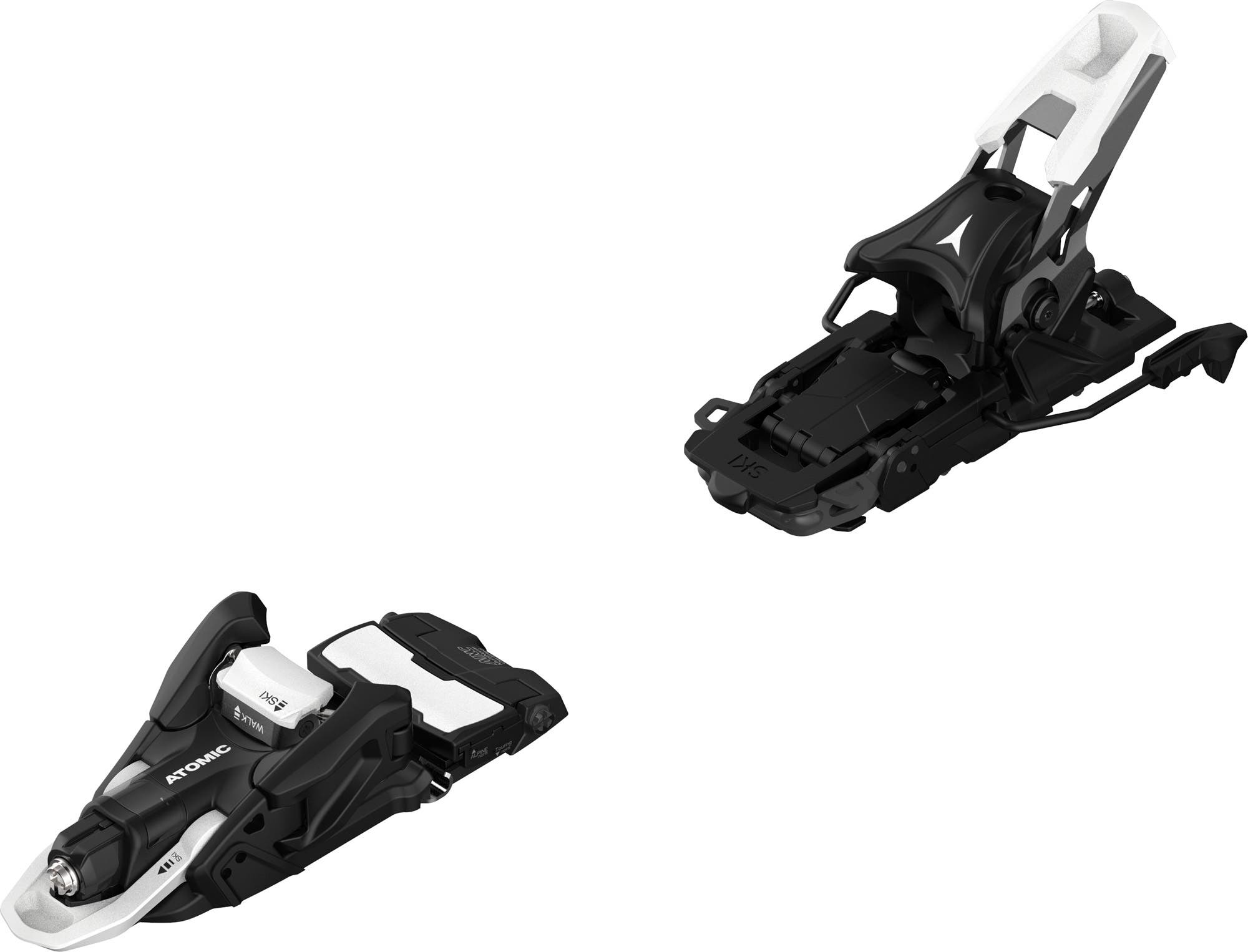
The best-selling SHIFT MNC gets a little sibling for 2021. With a reduced retention rating and a more affordable price tag, the Atomic SHIFT MNC 10 is ideal for skiers looking to get a binding that handles ski areas and backcountry tours with ease, but don’t need to turn it up to 11 (or more). This new version has the same features as the original: a toe switch that flips the binding between ski and tour mode, an alpine-level of performance, and a better-behaved brake in walk mode.
Atomic SHIFT MNC 10 Details
- ISO Release Value Range: 4-10
- Weight: 1 lb. 15 oz.
- Brakes: Included
- Also Branded As: Salomon, Armada
- MSRP: $550
Shop for the Atomic SHIFT MNC 10: Backcountry | evo | Amazon
Marker Kingpin M-Werks 12

Built with the same performance standards of the Kingpin 13 but put on a serious diet, the new M-Werks Kingpin is the latest option for a lightweight tech toe/alpine heel binding hybrid. Using carbon reinforcements in the toe and heel, Marker was able to create a backcountry freeride binding that is much more comfortable for long journeys into the backcountry.
Marker Kingpin M-Werks 12 Binding Specs
- Weight: 620g per binding (with brakes)
- Release settings: 4-12
- Brake: Optional
- MSRP: $729
Buy the Marker Kingpin M-Werks 12: REI | Backcountry | evo | Amazon
Dynafit TLT Speed Z12
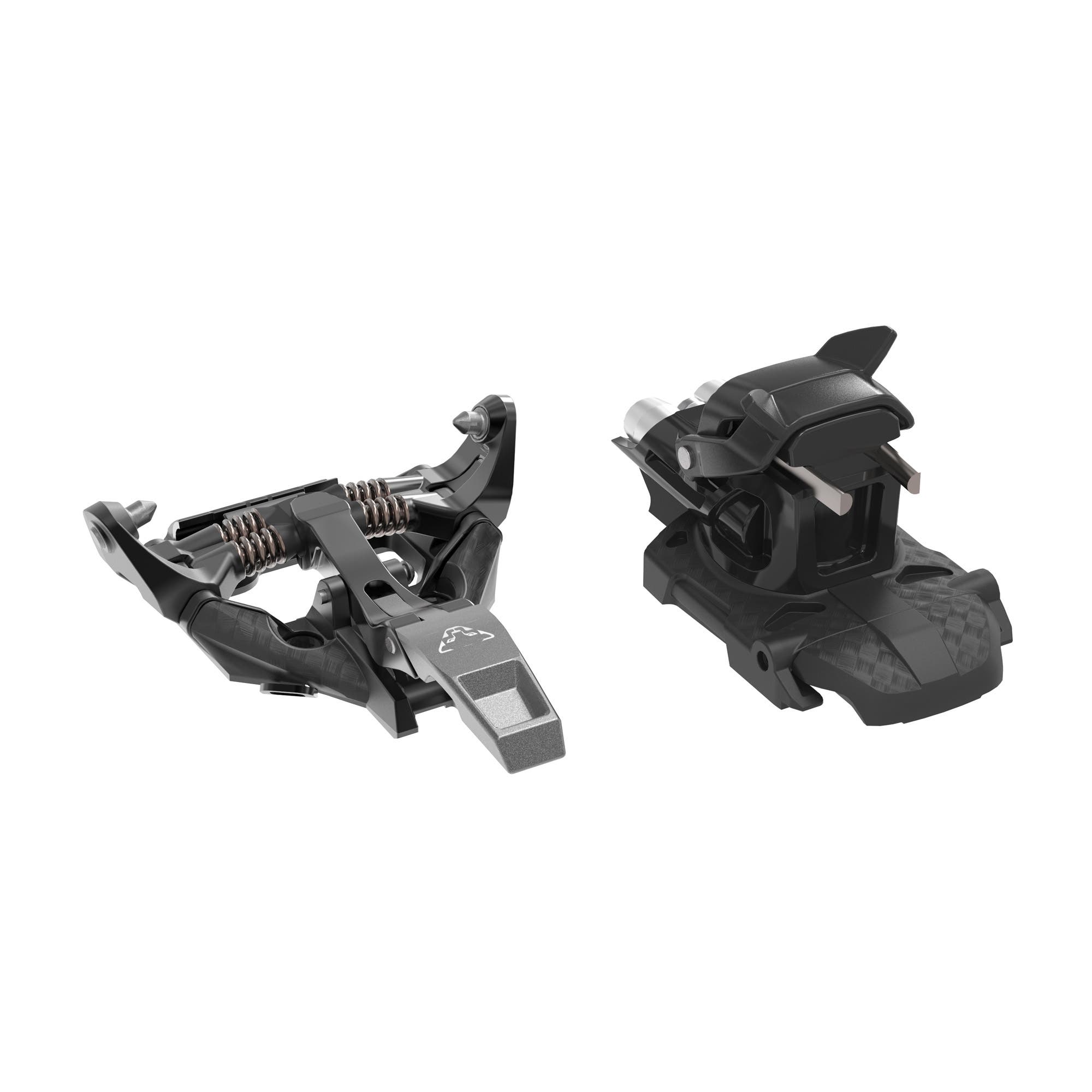
Dynafit invented the tech binding, and the TLT Speed remains the industry standard. Made with durable aluminum components, a rotating heel, and weight trimmed in a number of places, the refined TLT Speed is in the upper echelon of tech bindings. And thanks to wear-and-tear reducing innovations like the bayonet lock, one pair is sure to last a long time, too.
Dynafit TLT Speed Z12 Binding Details
- Weight: 285g per binding
- Release settings: 6-12
- Brake: Optional
- MSRP: $450
Buy the Dynafit TLT Speed Z12 on Amazon: Dynafit TLT Speed Z12
Salomon S/Lab SHIFT MNC 13

In downhill mode, the 865-gram SHIFT MNC performs like a high-performance, 6-13 release value alpine binding, and is compatible with any type of DIN-certified boot sole. The binding transforms into uphill mode by flipping a switch in the toe which releases wings that function with a boot’s tech inserts. For anyone who skis resort and backcountry equally, or those who want a single set-up for everywhere they ski, this is now the best option on the market.
Salomon S/Lab SHIFT MNC 13 Details
- Weight: 865g per binding
- Release settings: 6-13
- Brakes: Included
- Also Branded As: Atomic, Armada
- MSRP: $600
Available to buy here: Amazon | Skis.com | evo | Backcountry | REI
Salomon S/Lab SHIFT MNC 13: Gear of the Year for 2019
G3 ZED 12
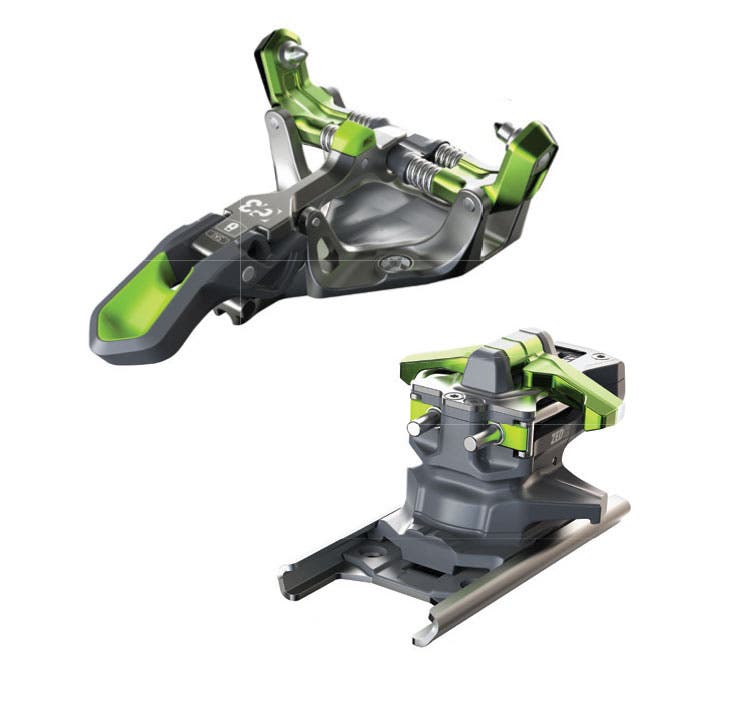
G3 re-thought its beloved ION to create a sub-350-gram, 5-12 release value tech binding that performs extremely well in steep terrain, soft snow, and most other conditions backcountry skiers will encounter. The ZED’s toe retention pressure held up well enough in ski mode that we were never tempted to lock it out, even in high-consequence terrain. Optional 85-gram brakes are available for those who don’t want to use leashes, but they cost extra.
G3 ZED Binding Details
- Weight: 345g per binding
- Release settings: 5-12
- Brakes: Optional
- Price: $499 (brakes, $85) [BUY NOW]
Buy it online: REI | Amazon
Marker Alpinist
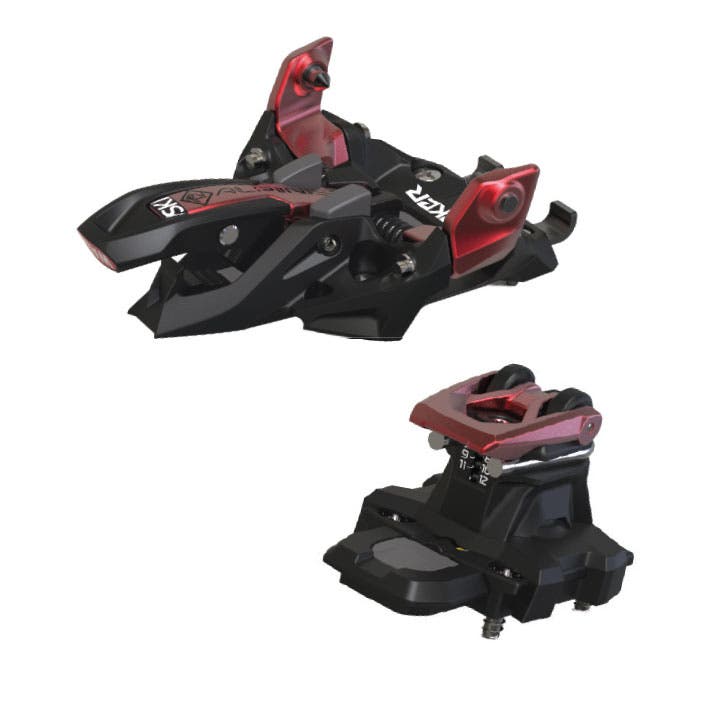
Marker continues its evolution towards backcountry binding domination with a new lightweight, low-tech option, the Alpinist. While its uphill and downhill performance is on par with the other low-tech options, the Alpinist’s innovative, intuitive tour-to-ski transition won tester praise. Two rails slide forward or backward to hold down or release the optional brake, and a simple turn or flip of the heel riser is all it takes before starting up or down.
Marker Alpinist Details
- Weight: 245g per binding
- Release settings: 6-12
- Brakes: Optional
- Price: $449 (brakes $59) [BUY NOW]
Check out these prices: evo | Amazon
Dynafit ST Rotation 12
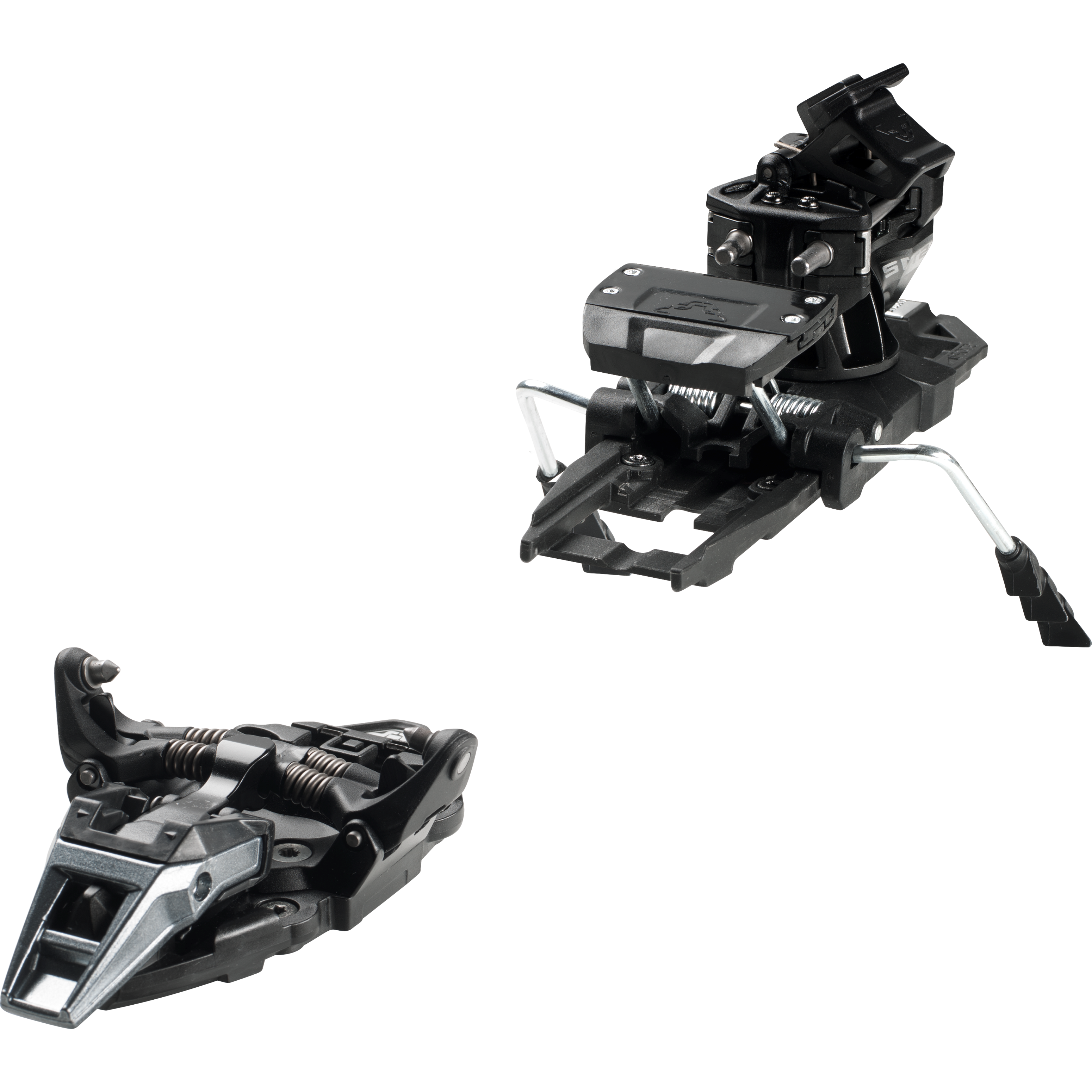
The original tech binding company offers the Rotation 12 as a TÜV-certified, backcountry-purist binding that can get by in-bounds, but, for all intents and purposes, is made for the skin track. The brand’s bayonet heel is built to withstand the forces specific to tech-style heels, but it’s still hard to feel the reliability that comes with the alpine-style heels of the other bindings on this page. If you’re a backcountry purist who spends more time going up than down but wants the safety that comes with a TÜV certification, this is the best choice.
Dynafit ST Rotation 12 Details
- Weight: 1 lb., 8 oz. with brake
- ISO Release Value: 5-12
- Brake: Optional
- MSRP: $650
Shop for the Dynafit ST Rotation 12: REI | Backcountry | evo | Amazon
Stay on topic: Gear of the Year 2019 – Backcountry Equipment
Fritschi Tecton 12
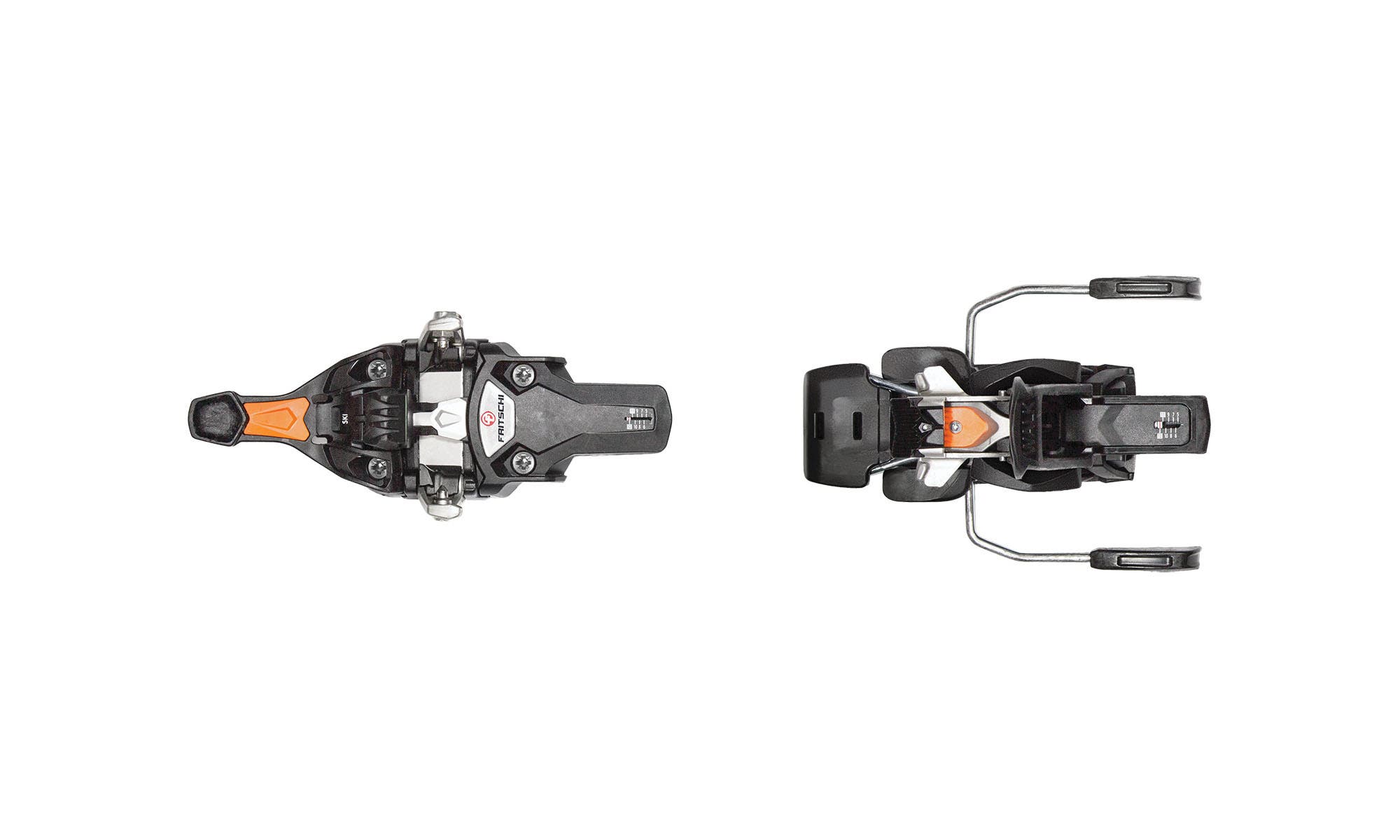
The Tecton is Fritschi’s answer to the demands of a growing market: a tech binding with an alpine-style heel clamp. Using the updated toe piece from the Vipec EVO (the only tech toe with certified release values), the Tecton adds an all-new heel with DIN to 12. Testers found the new interface powerful, with more edge sensitivity than pin-style heels. Complaints? The heel risers were finicky, and the unproven reliability of the complex binding did raise a red flag for several testers.
Fritschi Tecton 12 Binding Details
- Weight: 550g per binding without brakes
- Release settings: 5-12
- Brakes: Optional
- MSRP: $649
Shop for the Fritschi Tecton 12: REI | Backcountry | evo | Amazon
Marker Kingpin 13
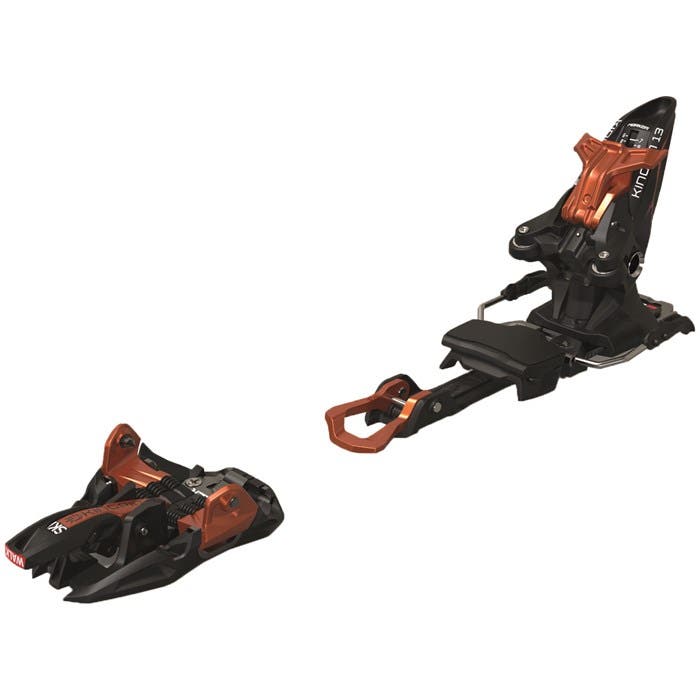
The primary difference between the Kingpin and the SHIFT is the toe piece: The Kingpin’s tech-toe piece provides more precise energy transfer in ski mode than any step-in binding. But this energy transfer can travel from ski to leg in hard snow, which can rattle some skiers in icy conditions. Skiers who skew more towards backcountry than resort—and live in places that have soft snow more often than hard—will still be happy with the Kingpin, especially considering its efficient transition capabilities from uphill to downhill mode.
Marker Kingpin 13 Details
- Weight: 1 lb. 10.5 oz. with brake
- Release settings: 6-13
- Brake: Included
- MSRP: $650
Buy the Marker Kingpin 13: REI | Backcountry | evo | Amazon
G3 ION 12
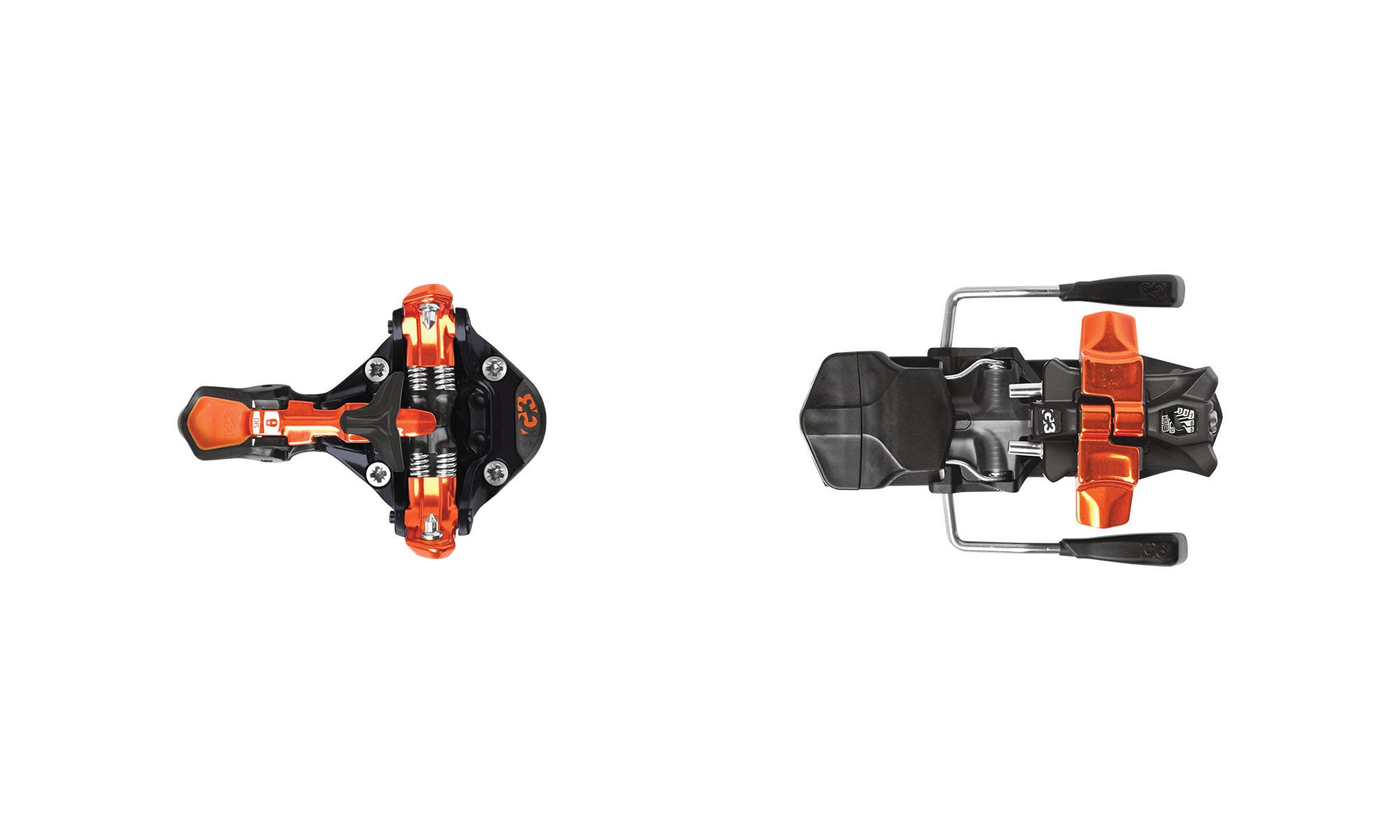
The ION has quickly risen to the top of the tech-binding market due to its ease of use, reliable retention with forward heel pressure, durability, and zero-fuss utility (all adjustments can be done with a #3 Pozi-drive). The ION returns this season with only minor tweaks, and was praised as “simple, solid, sick.” For a few bucks less, it’s also available as the ION 10—without brakes and therefore a bit lighter.
G3 ION 12 Binding Details
- Weight: 595g per binding
- Release settings: 5-12
- Brakes: Optional
- MSRP: $579
Buy the G3 ION 12: REI | Backcountry | evo | Amazon
Salomon MTN Pure Binding
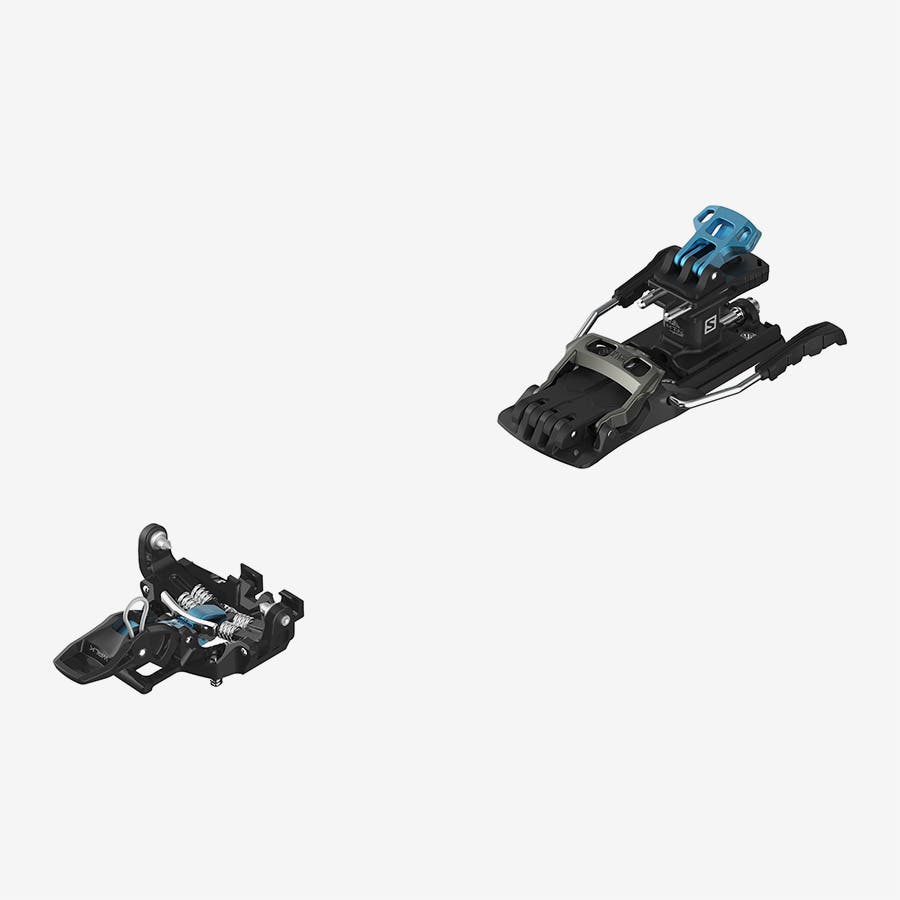
Salomon has been killing it for several seasons now with its ski-touring gear. Its new MTN binding continues that upward trend. The binding doesn’t reinvent the wheel, but offers an easy step-in aid, and simple, non-rotating heel post with three heel-riser positions, and ski-crampon adapter. Testers called the MTN “dependable, lightweight, and efficient.” The MTN is sold with or without ski brakes, depending on your preference; but most testers preferred the weight savings of brakeless bindings in the backcountry.
Salomon MTN Details
- Weight: 390g per binding without brake
- Release settings: “Women,” “Men,” and “Expert”
- Brakes: Optional
- Also branded as: Atomic Backland
- MSRP: $550
Buy now: REI | Backcountry | evo
Tyrolia Adrenalin 14
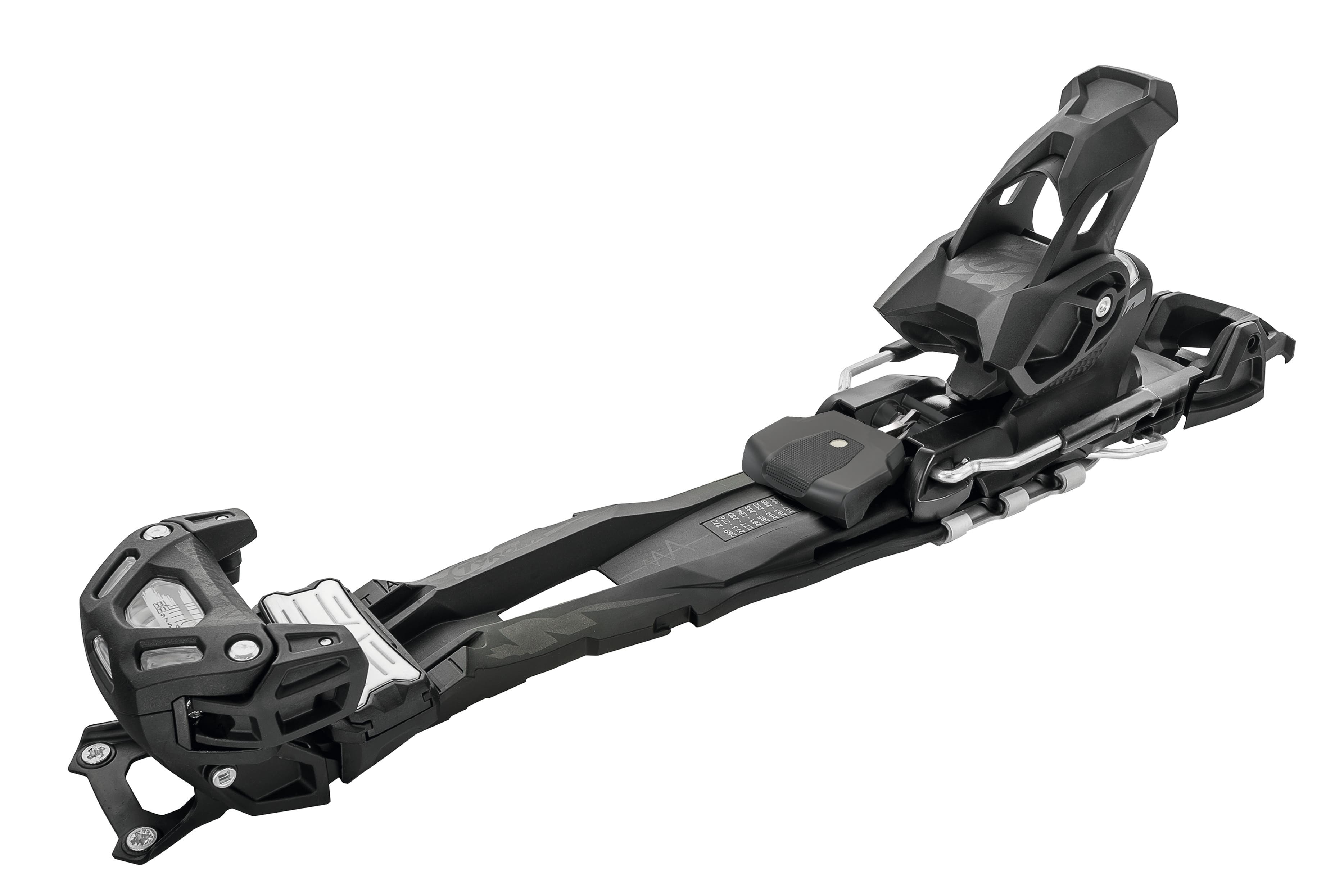
Frame bindings, which are essentially an alpine binding on a track that allows for touring, are still relevant for skiers who refuse to ski in anything but plastic-soled boots (or boots without tech inserts). The Tyrolia Adrenalin’s unapologetically burly track connecting the heel and toe pieces provides solid energy transfer with minimal elevation over the ski. An ergonomic front pivot point makes touring simple, but the heavy heel piece provides little incentive to tackle long climbs and all-day backcountry adventures.
Tyrolia Adrenalin 14 Details
- Weight: 5 lbs., 6 oz.
- ISO Release Settings: 4-14
- Brake: Included
- MSRP: $369
Buy now: Backcountry | Amazon
Bonus Binding: Armada N SHIFT MNC 13

Functionally, there’s nothing new about Armada’s version of the lauded SHIFT binding, which is essentially an alpine binding that, if your boot has tech inserts, you can use to ski uphill. It’s noteworthy because the brand is now owned by the same parent as Salomon and Atomic, so Armada-branded bindings are officially a thing, and they look especially handsome in all black.
Armada N SHIFT MNC 13 Binding Specs
- Weight: 850g per binding
- Release settings: 6-13
- Brakes: Included
- Also branded as: Salomon, Atomic
- MSRP: $725
Note: Using the links on these pages to make purchases will provide SKI with a small commission.
People Also Ask
What are backcountry bindings?
- Backcountry bindings are ski bindings that feature a releasable heel. Combined with skins, they can make traveling uphill with skis easier than taking your skis off and walking. All of the bindings featured above require backcountry boots with tech inserts — sometimes called “Dynafit inserts” — but there are backcountry/resort hybrid ski bindings that can function with boots that do not have tech inserts.
Do these bindings work with any ski?
- Yes. You can put backcountry bindings on any ski that does not come pre-mounted with a binding. You might find, however, that backcountry work especially well for going uphill when mounted on lightweight, backcountry-specific skis. SKI highly recommends only having a certified, professional ski technician mount bindings to skis.
Do all backcountry bindings work with all ski boots?
- No. All of these bindings require ski boots that have tech inserts and are labeled “ISO 13992.” If you are unsure, ask a certified ski technician if your boots will work with the bindings you want to buy. SKI highly recommends only skiing in boots and bindings with the same ISO compatibility and have been properly installed and adjusted by a professional ski technician.
Can I adjust my ski bindings?
- Think of your ski bindings like your car’s power steering: If you go in and start recklessly turning screws, you’re probably going both invalidate the warranty and break something (your car, your binding, and/or yourself). Just like taking your car to a mechanic to get the steering properly fixed, you should take your bindings to a certified ski technician if you think something is wrong with your ski bindings. SKI highly recommends only skiing in boots and bindings with the same ISO compatibility and have been properly installed and adjusted by a professional ski technician.
What are Tech Inserts?
- Tech inserts are metal-reinforced indentations in the toe and heel that make a ski boot compatible with tech bindings for ski touring. They are also sometimes called “Dynafit inserts,” and require bindings designed for tech inserts (ISO 13992 certified).
More Backcountry Gear
Best Backcountry Skis of the Year
Ideal Backcountry Backpacks
Top Backcountry Ski Boots